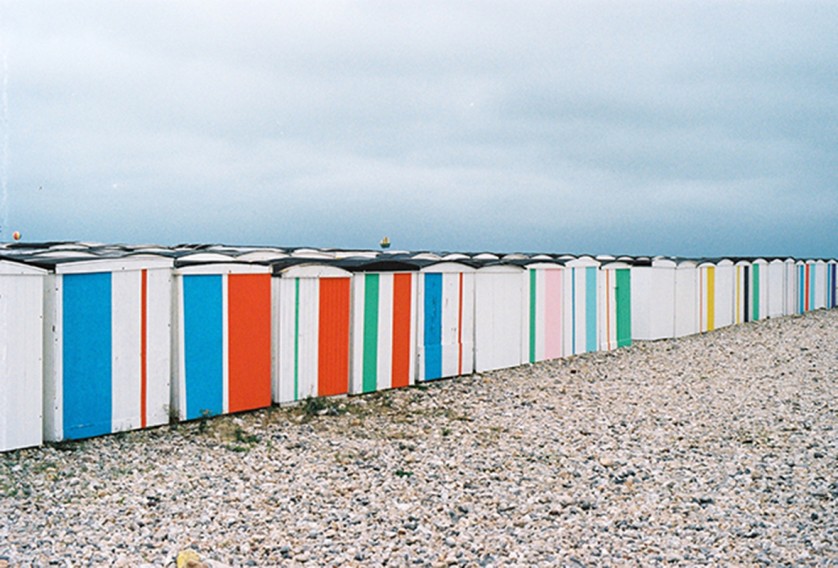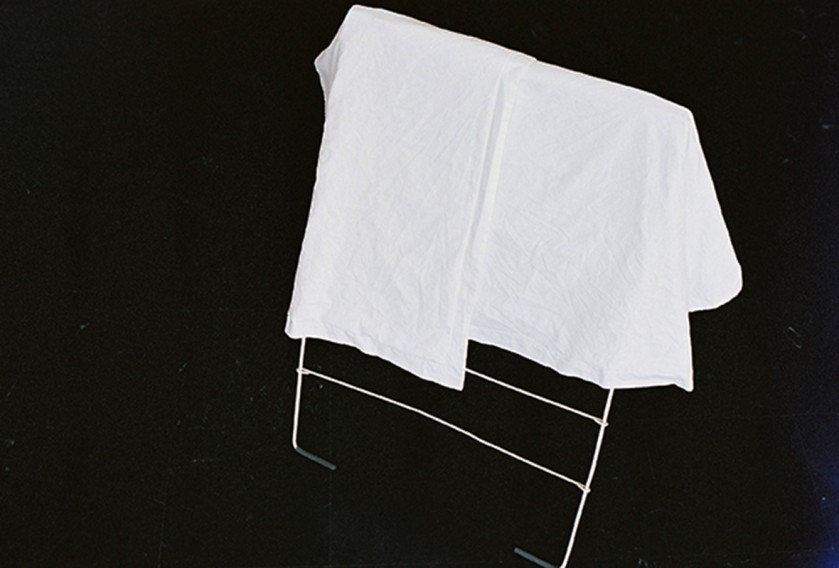Sabine Jelinek
A Parisian friend of mine lends me her bicycle in August because she is away on holiday like all the other Parisians. Hence, I have the chance to explore the city by bike, which I was advised against beforehand but this turns out to be the best thing ever. So, I am on my way by bike to a soirée of the Austrian Ambassador Michael Linhart who has only been in the city on the Seine for one week and wishes to present himself to Paris’ society. All the other Austrian artists who currently have a studio at the Cité will be there as well, and we can get to know each other and enjoy ourselves in this glamorous setting. The embassy is close to the Invalides, an area to which I seldom go and that I do not know well. Therefore, I use the navigator of my mobile phone while cycling. Almost there and sure of my destination, I put the phone in the pocket of my jacket while cycling. As so often, however, I underestimate the distances in Paris. The next bridge and street are still far away. Now, I cannot remember where to turn and again have to check on my phone. But the phone is gone. I get off the bike, empty all pockets and search all clothes, but do not find it. I cycle back to the last bridge, again in vain. The phone is gone. OMG, spending the rest of my stay in Paris without my cell phone? I’m in a fix: all the new contacts and addresses are lost, the old ones too and all the photos and videos as well because I didn’t make a backup. Ok, what am I to do, where do I have to go? I cannot call anybody. So, I start to talk to a young man who fiddles around with two mobile phones. I explain my situation and ask him to call my mobile phone. When he hears the country code – Austeria ? – he refuses to call me. He is “from Japan”. I am desperate and re-consider my strategy. It was wrong to ask a tourist, I have to find a Frenchman. Quickly I spot somebody: wearing a fine, midnight blue suit, he stands there, nonchalantly leaning against the balustrade of the bridge. Again, I explain my unfortunate situation and ask him to call my mobile phone. “No Problem,” he says and makes the call. He speaks in French and I am happy that the phone has been found and that the finder answered the call. Five minutes later he already arrives on a motor bike and returns the perfectly intact phone to me, glad to have made me happy. I thank him and ask the saviour for his name. He smiles and says that his name is “Pascal Paris – easy to remember.” That’s right, I won’t forget it. Thank you, Paris!
| 1. | My stay in one word: |
| L’AMOUR | |
| 2. | Things I miss since I am no longer there: |
| Getting up every day, seeing the sky of Paris, feeling the humming freight ships on the Seine and continuing with my work right away. Having a fresh croissant or baguette for breakfast. Constantly exchanging ideas with many other artists.. | |
| 3. | Dos & Don'ts at this place: |
| An absolute DO: Go to the banks of the Seine (this became more important to me than going to the Tour Eiffel) either for a picnic or for dancing tango. Or to the Canal Saint-Martin where there was one of the few free open-air pools of the city centre near the Bassin de la Villette in summer. For me, a DON‘t would be to take one of those tourist boats – neither on the Seine nor on the Canal! | |
| 4. | Where you can buy great supplies: |
| At the BHV near the Hôtel de Ville or at the boesner shop in the area around the Bastille or – also important for photographers – the very big Rougier & Plé at Boulevard Beaumarchais towards République. Lots of great textiles are offered at the foot of Montmarte between Anvers and Abbesses! | |
| 5. | What you should definitely bring with you from home: |
| Enough reading material, good shoes (you walk around so much!) and a good mobile phone contract (internet access on site does not always work so well). As for the rest, bring as little as possible as you can get everything in Paris and even more beautiful things and sending things back home is expensive. | |
| 6. | On art at my residency place: |
| At the Cité itself there are a small and a big exhibition hall and, in addition, there are always open studios – you should try those for a start. Otherwise, the Marais has many good galleries and the Maison Européenne de la Photographie is close by. The Louvre and the Musée d’Orsay are absolute musts! They have special opening hours in the evening when you can see art in a different light (!). | |
| 7. | Around the studio – this is where I go shopping, drink a coffee and get the best lunch specials within walking distance: |
| In fact, you can get everything around St. Paul, there are several supermarkets and then, further towards the Bastille, cheese shops, fresh fruits and vegetables as well as boulangeries. I can recommend the small delicatessen IZRAËL in Rue François Miron and their special olives mix.I very much liked to eat at Miznon (bear in mind that it closes for Shabbat), the little brother of the completely overrated and crowded L’As du Fallafel around the corner. | |
| 8. | Where I like to spend the evening (dinner, drinks and best sound): |
| In the Marais, the bar Au Petit Fer à Cheval is very nice, and there are lots of bars there anyway. Another option for going out is along the Canal Saint-Martin, around Chez Prune. | |
| 9. | What I would have liked to know about the studio already at the start of my residency: |
| That it’s better not to get off the metro at Pont Marie with my entire luggage because there is no escalator in that station. Les Halles and Châtelet are not good either because you have to wander around below the ground for seven to ten minutes. It is best to get off the RER B right at Nôtre Dame (take Sortie 5) and walk over to the Cité while enjoying the view of the cathedral. |
Website resident: sabinejelinek.at








